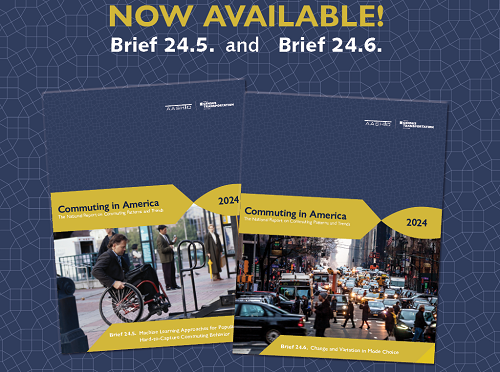The American Association of State Highway and Transportation Officials recently released two new reports regarding U.S. commuting patterns.
[Above image by AASHTO]
The first report – “Commuting in America: Machine Learning Approaches” – analyzes publicly available data on the commuting patterns and habits of working people with disabilities, synthesizes information related to travel and disability, and identifies the next steps for further research. Key findings from this report include:
- Characteristics of working-age people with a disability were similar across all datasets.
- Public transportation use by people with disabilities has declined over time within the longitudinal “American Community Survey” dataset, as most people with disabilities use a personal vehicle for transportation, regardless of disability status.
- Some 72 percent of people with disabilities report reduced day-to-day travel because of their disability.
- Technology, such as smartphones and internet use, confounds the relationship between commuting and disability status. While such technology can lower barriers that people with disabilities encounter while traveling, people with disabilities report lower internet use and access, and lower computer and smartphone ownership than people without disabilities.
The second report – “Commuting in America: Change and Variation in Mode Choice” – digs into how commute mode choice patterns and trends influences public policies.
This report summarizes changes in mode choice to work and travel behavior over several decades, with special attention on the shift between 2010 and 2019.
It also investigates changes in commuting mode choice at various geographic and sociodemographic spheres, adding layers to the commuting mode choice and revealing underlying trends surrounding them.
Both reports are available via the online AASHTO Store.
 AASHTO
AASHTO
McGraw New AASHTO Maintenance Committee Vice Chair
July 3, 2025 AASHTO
AASHTO

